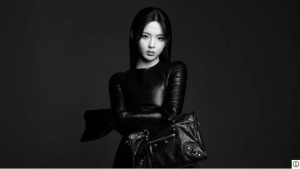In January 2022, Loewe launched a follow up to last year’s My Neighbor Totoro collection with another collaboration with Studio Ghibli, this time with accessories and apparel inspired by Spirited Away.

As expected given the Totoro collection’s success, the Spirited Away line quickly sold out and appeared on resale websites for exorbitant prices. Only it wasn’t just the clothes and bags selling on the likes of Grailed; even special Spirited Away Loewe shopping bags appeared on eBay for hundreds of dollars.
Spirited Away is perhaps an unusual entity in the anime genre – the film won the Academy Award for Best Animated Feature in 2003, giving it a mainstream, global relevance rarely seen in other anime works. But it is just the tip of the iceberg of the immense anime fandom, which has gained more and more recognition in the West thanks in no small part to the introduction of anime series on streaming platforms and overall greater availability of anime and manga titles in English.
Anime Exports
In the Western context, anime and manga have only just begun to break out of their subculture status, driven by the arrival of shows like Death Note on Netflix or live-action adaptations of beloved series like Cowboy Bebop. But as Tiffany Hsu, Mytheresa Vice President Womenswear & Kidswear Fashion Buying, notes, the fandom has persisted for decades as a mainstream part of culture in Japan and other parts of Asia.
“It has only been seen as niche in European and U.S. countries. However over the past 10 years many mangas and animes have been translated into different languages so they are not really considered niche anymore,” she says. Hsu adds that sites like Crunchyroll, an American distributor for anime founded in 2006, and anime’s connection to the gaming industry have helped anime and manga culture gain traction in the English-speaking world. Continue to read the full article here





